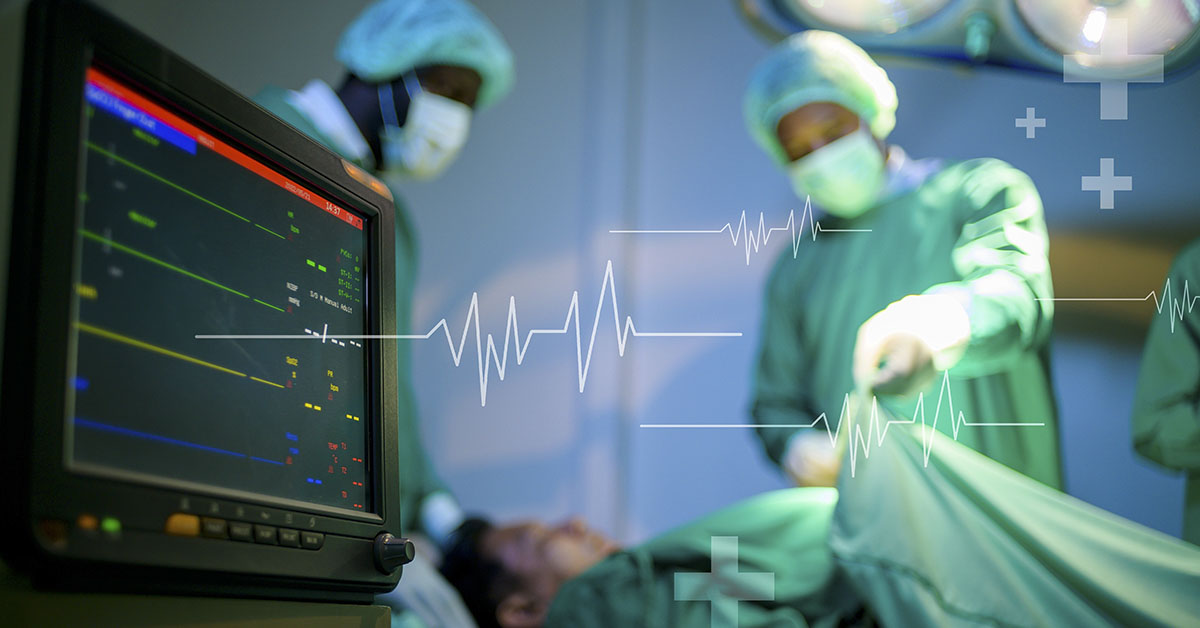People who’ve survived near-death experiences often use the phrase “my life flashed before my eyes,” and a new study indicates that “life reviews” may not just be a figure of speech. For the first time in history, scientists recorded the activity of a brain as the person died. And it showed brain wave patterns that looked similar to dreaming and memory recall. Experts debate if this means a person’s life really does “flash before their eyes” right before they pass on.
What Happens at the Time of Death?
Initially, the study wasn’t intended to record brain activity during a demise. That was just a coincidence. The researchers monitored the brain waves of an 87-year-old patient via EEG. As they watched for seizures, the patient had a sudden heart attack and died, leaving the scientists with 15 minutes of brain activity, including when his heart stopped. The man had come to the Canadian hospital three days prior with bleeding between his brain and skull. Zemmar and the other doctors removed the clot, but the man returned after experiencing seizures.
They examined the 30 seconds before and after the time of death and found increased gamma oscillations, as well as slower brain waves, including theta, delta, alpha, and beta. This brain activity is indicative of dreaming, meditation, and memory recall. This state of mind may be what people experience as they take their last breath.
“Through generating oscillations involved in memory retrieval, the brain may be playing a last recall of important life events just before we die, similar to the ones reported in near-death experiences,” said Dr. Ajmal Zemmar, lead author of the study. “These findings challenge our understanding of when exactly life ends and generate important subsequent questions, such as those related to the timing of organ donation.” [1]
The recording showed that the brain can continue coordinated activity even when it stops receiving blood flow. Similar increases in gamma oscillations have been found in dying rats in previous studies, but this is the first time this brain activity has been observed in humans. But that being said, this phenomenon was found in just one case study. Also, the patient’s brain suffered previous injuries and underwent unusual activity due to seizures. [2]
Read: Nurses Are Sharing the Last Words People Have Said On Their Deathbed
“Replaying some of the nicest moments in their lives”
“It is very hard to make claims with one case, especially when the case has bleeding, seizures, and swelling,” Zemmar said. “But what we can claim is that we have signals just before death and just after the heart stops like those that happen in the healthy human when they dream or memorize or meditate.” [3]
Researchers need to examine the brains of healthy cases before making any conclusions about what the brain does during death. However, this may be impossible since they’ll need the subjects attached to the EEG before the time of death, and most healthy people don’t anticipate a speedy death. So it’s more likely that future subjects might only be those with pathological conditions, which may prevent researchers from having definitive answers about brain activity during the time of death.
But definitive answers or not, this case study can provide some hopeful ideas. “As a neurosurgeon, I deal with loss at times. It is indescribably difficult to deliver the news of death to distraught family members,” said Zemmar. “Something we may learn from this research is: although our loved ones have their eyes closed and are ready to leave us to rest, their brains may be replaying some of the nicest moments they experienced in their lives.” [4]
“My Life Flashed Before My Eyes”
So far, this study supports the anecdotal reports of life reviews during near-death experiences. In these cases, Zemmar theorizes that “the brain may still trigger those responses so that these patients perceive that near-death experience with the replay and everything, but then come back.”
One theory behind the life review phenomena states that life events exist in a continuum in people’s minds, and they become pronounced in times of extreme psychological and physiological stress. Another theory states that people’s memories begin to “unload” when the body is close to death. But neither theory can explain how so many memories could appear in people’s minds in a matter of seconds or less. [5]
This case study opens the door to further research on this subject. “I think there’s something mystical and spiritual about this whole near-death experience,” Zemmar said. “And findings like this — it’s a moment that scientists lives for.” [6]
Keep Reading: Her death remained a mystery for 46 years. Now, DNA evidence from a coffee cup at the airport led to an arrest
Sources
- “First-ever recording of dying human brain reveals dreaming-like activity.” New Atlas. Michael Irving. February 21, 2022
- “Enhanced Interplay of Neuronal Coherence and Coupling in the Dying Human Brain.” Frontiers. Ajmal Zemmar. February 22, 2022
- “Brain scans on a dying man suggest his life flashed before his eyes, researchers say.” Insider. Anna Medaris. February 23, 2022
- “First Scan of the Dying Brain Reveals a ‘Last Recall’.” Technology Networks. February 22, 2022
- “‘My life flashed before my eyes’: a psychologist’s take on what might be happening.” The Conversation. Steve Taylor. June 10, 2021
- “Life may actually flash before your eyes on death – new study.” BBC News. Holly Honderich. February 23, 2022.

